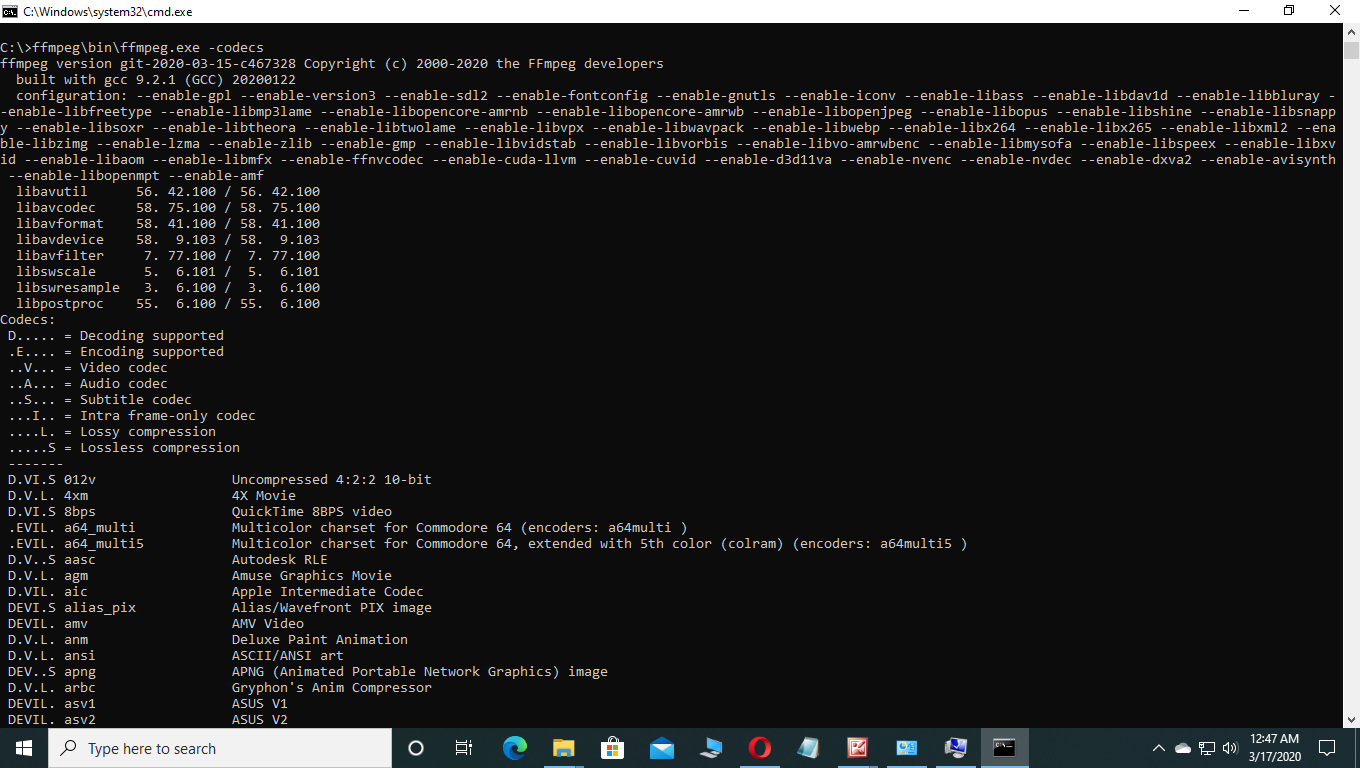

- How to install ffmpeg win 7 how to#
- How to install ffmpeg win 7 .exe#
- How to install ffmpeg win 7 archive#
- How to install ffmpeg win 7 full#
- How to install ffmpeg win 7 windows 10#
Step 3: Installing the app from Windows Store
How to install ffmpeg win 7 windows 10#
Note: If you don’t find this app on Windows 10 Store, you can back to Method 1

Or you can Select Apps if you want to explore more apps that available, according to popularity and featured apps. You can find the FFmpeg in Windows store using search box in the top right. Step 2: Finding the apps on Windows Store Recommended Apps Kodu for PC Windows 11 - Download Latest Version It looks like a small shopping bag Icon with the Windows logo on it. You can find the Windows Store at your desktop widget or at bottom in the Taskbar. Method 2: Installing App using Windows Store
How to install ffmpeg win 7 .exe#
exe file twice to running the Installation process
How to install ffmpeg win 7 how to#
In this tutorial we covered how to install FFmpeg on Windows. FFmpeg should now be installed on your Windows system and you can start using it to convert or encode your video and audio files. To check if ffmpeg is installed on Windows just run ffmpeg in the command line and it should output some information about our version of ffmpeg, such as available codecs, ffmpeg version, and some other things. If everything went well, we should be able to use ffmpeg from the command-line. Here’s how it looks like when you run the command in the Command Prompt: You can change C:\ffmpeg\bin with something else, if you have placed ffmpeg elsewhere. To do this just open a command promp (cmd) as an Administrator and run: setx /m PATH "C:\ffmpeg\bin %PATH%" Add FFmpeg to PATH Using the Command-Line The command-line method is faster and we’ll do it this way. You can do this in multiple ways, such as by using the command-line or using the Windows graphical interface. Like we said before the PATH is the system variable that your operating system uses to locate needed executables from the command-line. You can see for yourself if you go inside ffmpeg\bin: Next we want to add the path to the directory containing ffmpeg.exe (and a few other executables) to our PATH environment variable. So the path will be C:\ffmpeg in my case.
How to install ffmpeg win 7 archive#
Next we’ll move the archive somewhere in the C: drive. Now extract the archive and rename it to something simple, like ffmpeg. If you can’t extract it make sure to download and install 7zip on your system. It’s a link that will download the archive in 7zip format.
How to install ffmpeg win 7 full#
This allows you to run programs from any directory without having to type the full path to the program. The PATH environment variable is a list of directories that Windows will look in for executable files (EXE, DLL, BAT). To install FFmpeg on Windows is very easy, it’s just different than the usual install process.Īll we have to do is download the FFmpeg software which is bundled in an archive, place it somewhere we’d keep software/utilities, such as in the C: drive, and add its location to the PATH environment variable.


 0 kommentar(er)
0 kommentar(er)
